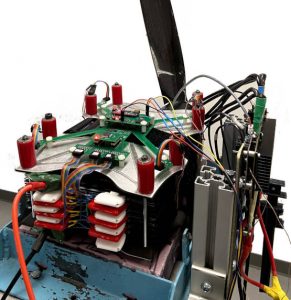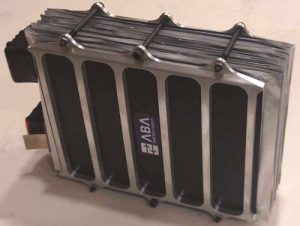While extended capacity retention is key for vehicle traction batteries, electric aviation demands power density retention from its batteries.
“Both takeoff and landing require high power, and landing is more challenging because you’re not fully charged,” said Michigan engineering professor Venkat Viswanathan. “To get high power you have to bring all the resistances down – anything that affects the ability to deliver that power.”
Where does resistance increase come from?
“The problem is that corrosion builds up on the electrodes, taking up space that could have housed lithium ions and making it harder for the lithium to reach available spaces,” according to the university.
The team explored the interactions among the electrodes, trying different electrolyte chemistries, looking at subtle changes that occurred within the electrolyte at different locations in the battery during charging and discharging.
While the prime suspect was the anode, findings pointed to damaging molecules that were forming near the nickel-manganese-cobalt oxide cathode, whose reactions went on to crack and corrode the cathode.
“It was a non-obvious outcome,” said fellow researcher Youngmin Ko, from the Lawrence Berkely National Laboratory. “We found that mixing salts in the electrolyte could suppress the reactivity of typically reactive species, which formed a stabilising corrosion-resistant coating.”
 Massachusetts-based 24M Technologies, another member of the research consortium, built a proof-of-concept cell (above) to the new recipe, which was tested at Battery Aero (left), a company founded by Michigan’s Viswanathan.
Massachusetts-based 24M Technologies, another member of the research consortium, built a proof-of-concept cell (above) to the new recipe, which was tested at Battery Aero (left), a company founded by Michigan’s Viswanathan.
Repeated simulated cycles of take-off, flight and landing revealed that the new cell maintained its power-to-energy ratio four times longer than the reference.
24M is now due to built a complete battery, scheduled to be rested in flight next year.
The experimental technique used to identify the damaging molecules was borrowed from biology, where it is loosely called ‘omics’. It is now going to be used to exploring the interactions of electrolyte components in transportation and grid-scale batteries.
The aviation work, which also involved the The University of California, Berkeley, is published as ‘Omics-enabled understanding of electric aircraft battery electrolytes‘ in Joule.

